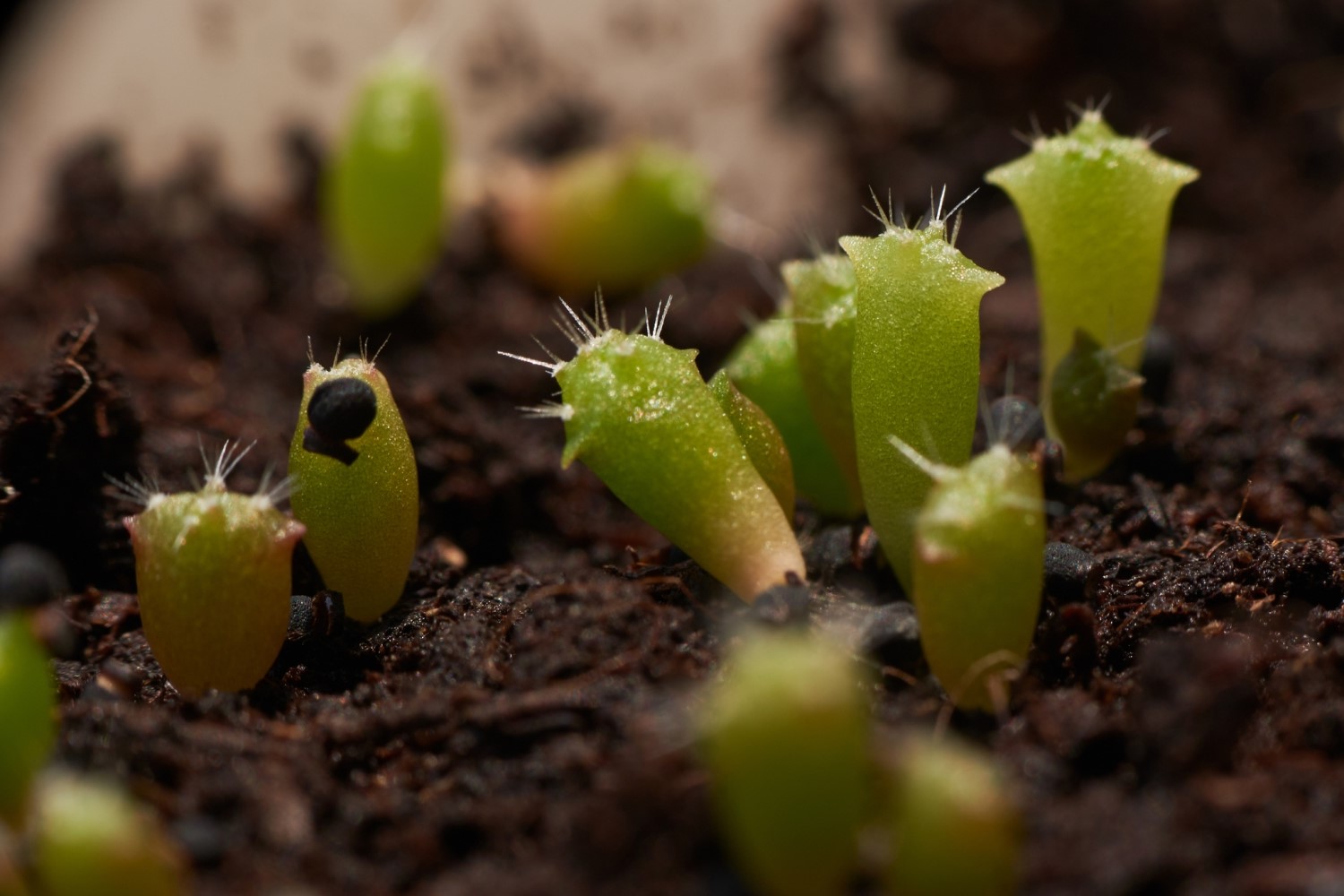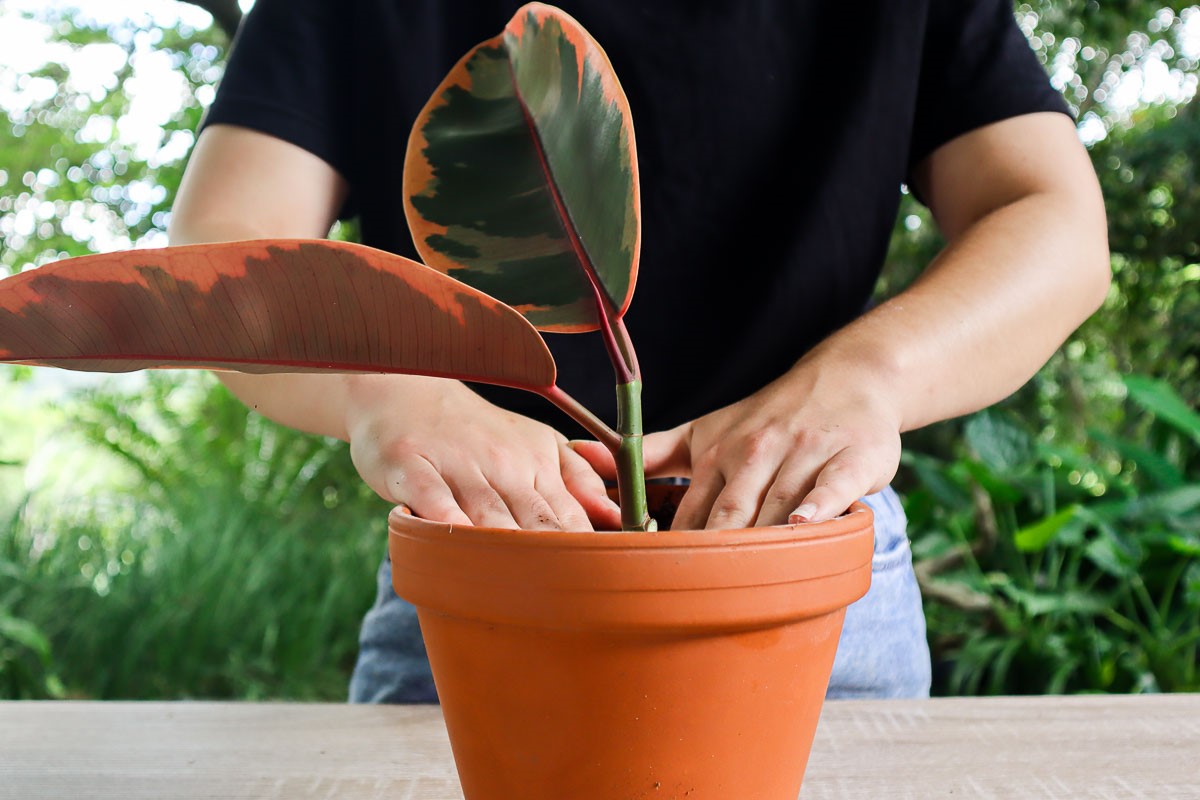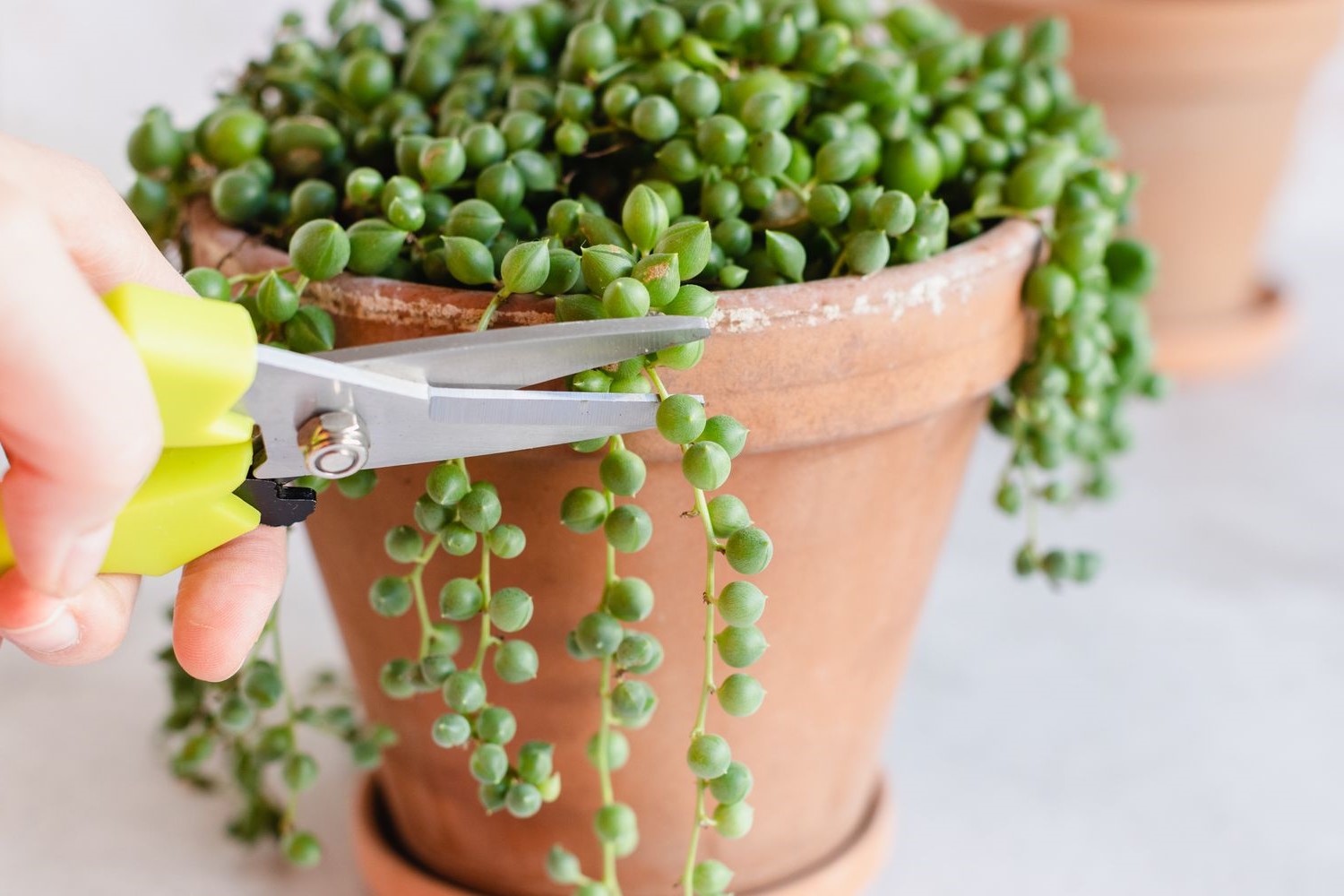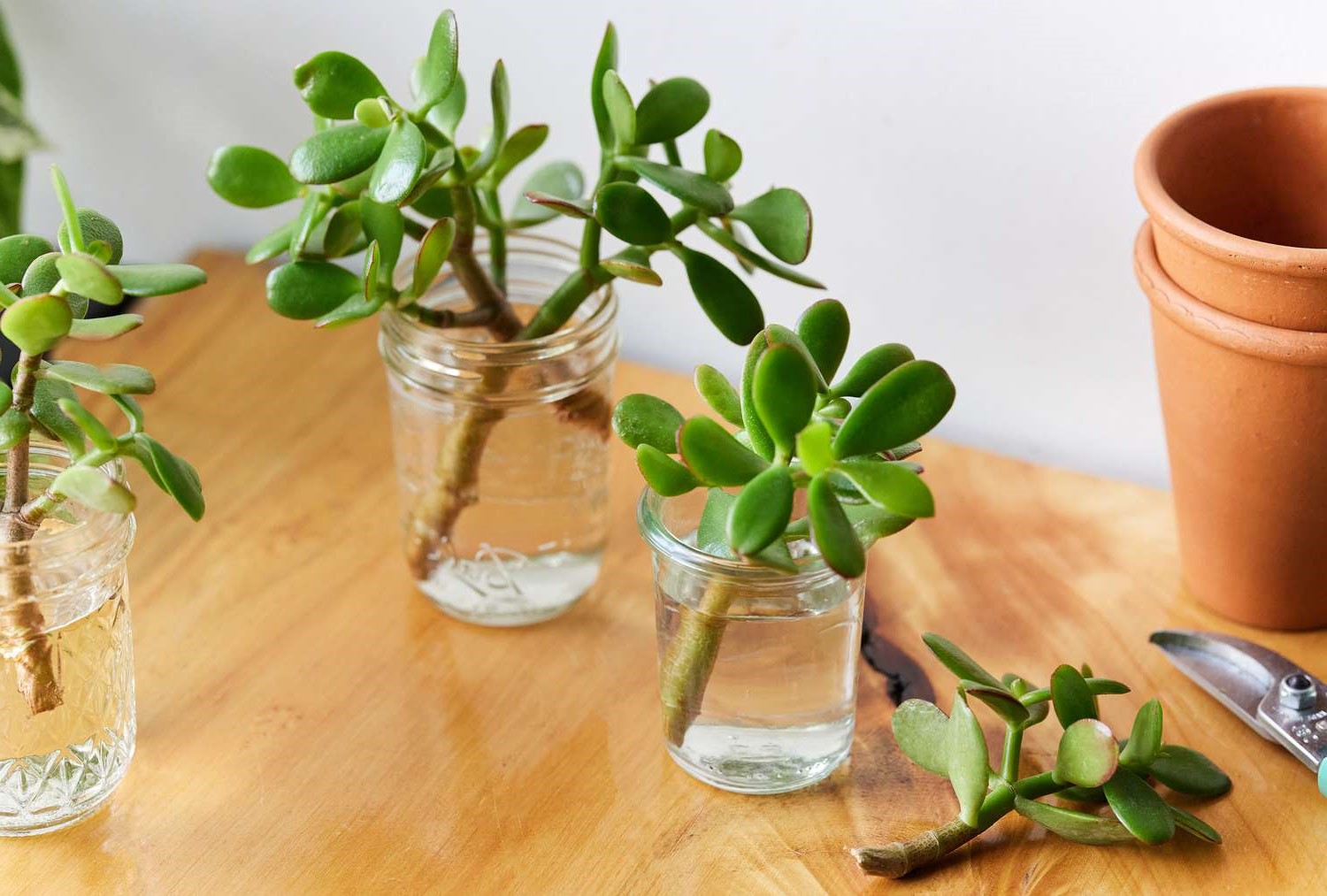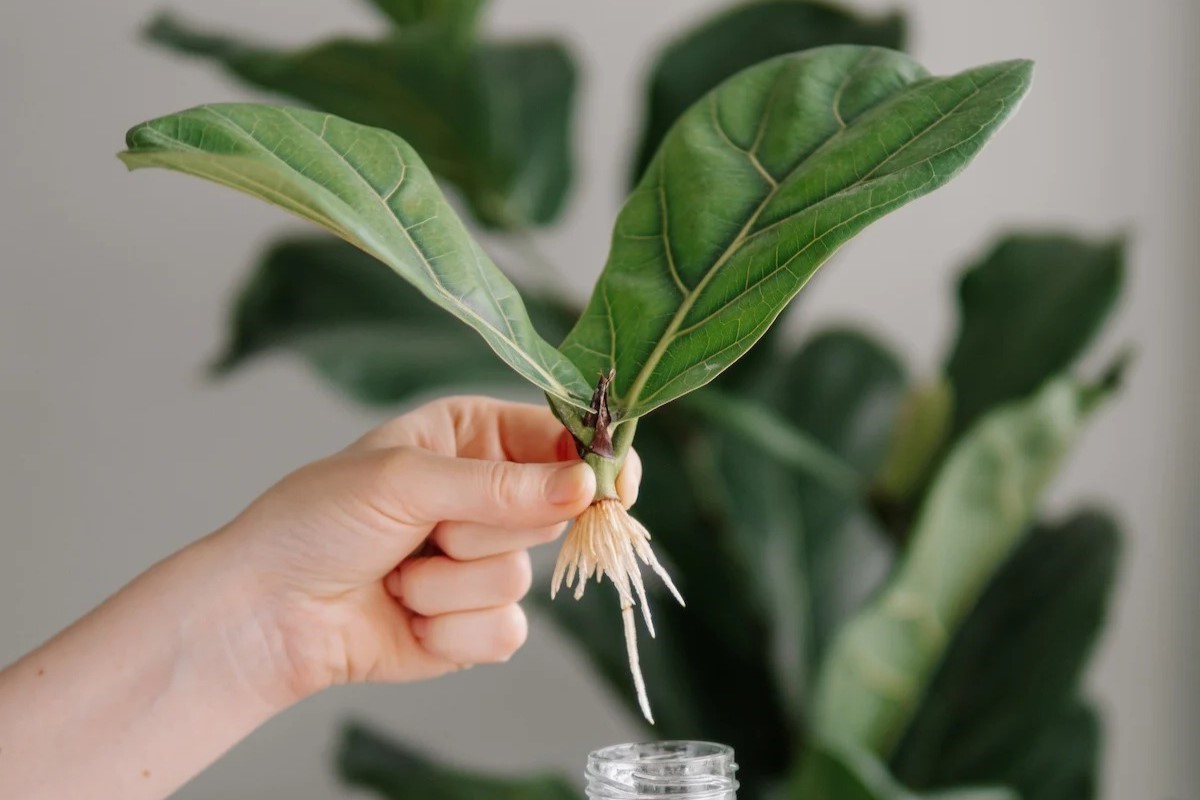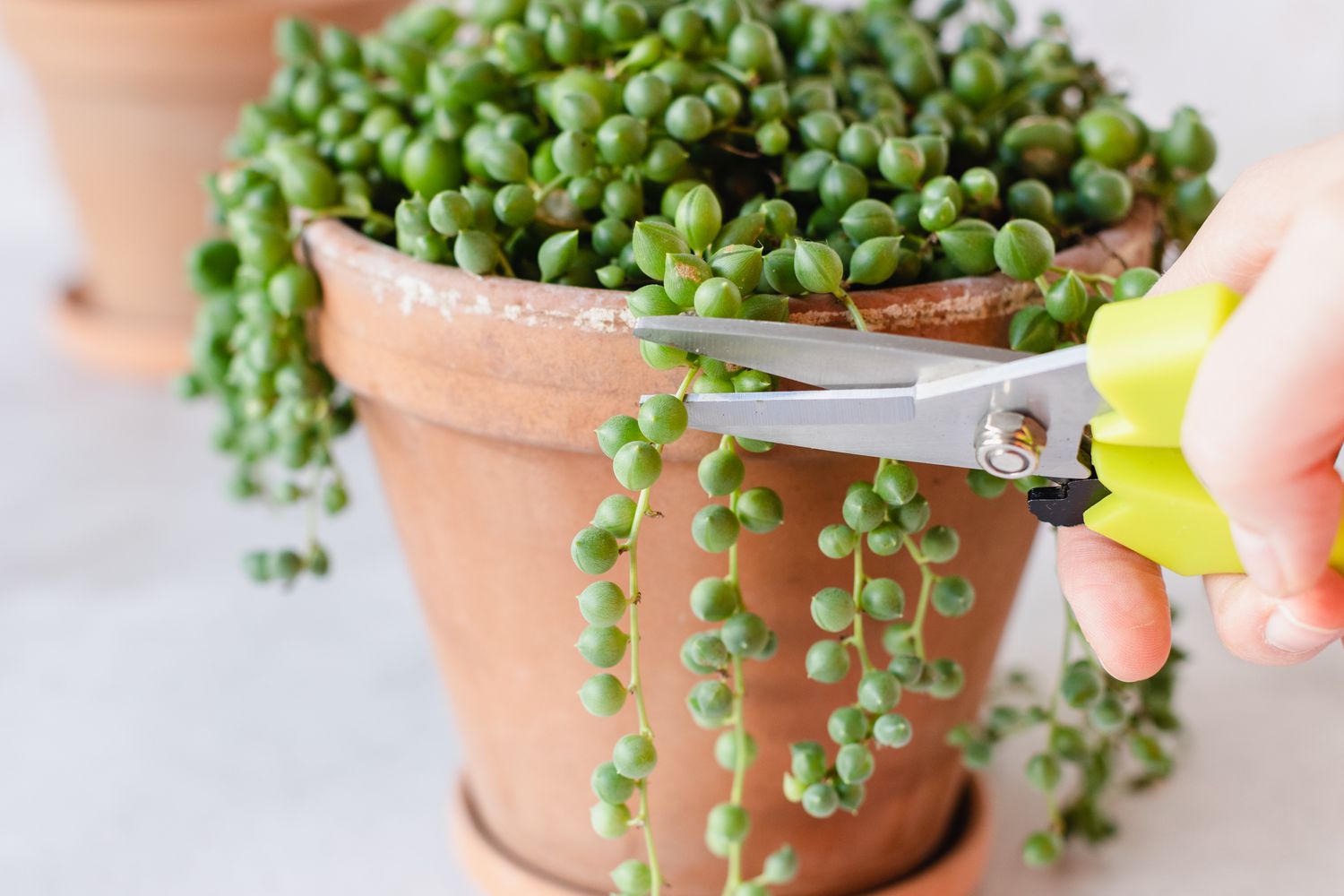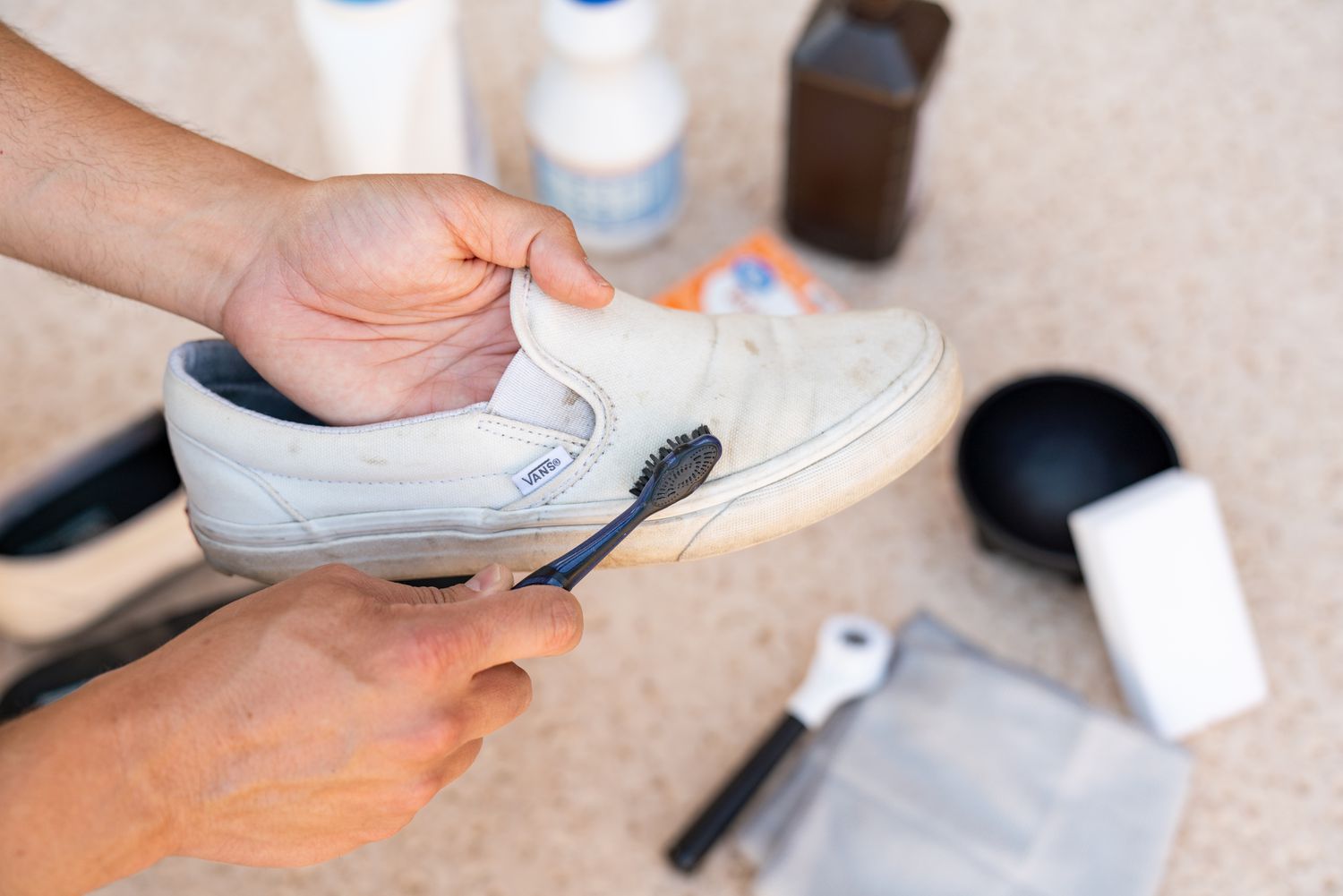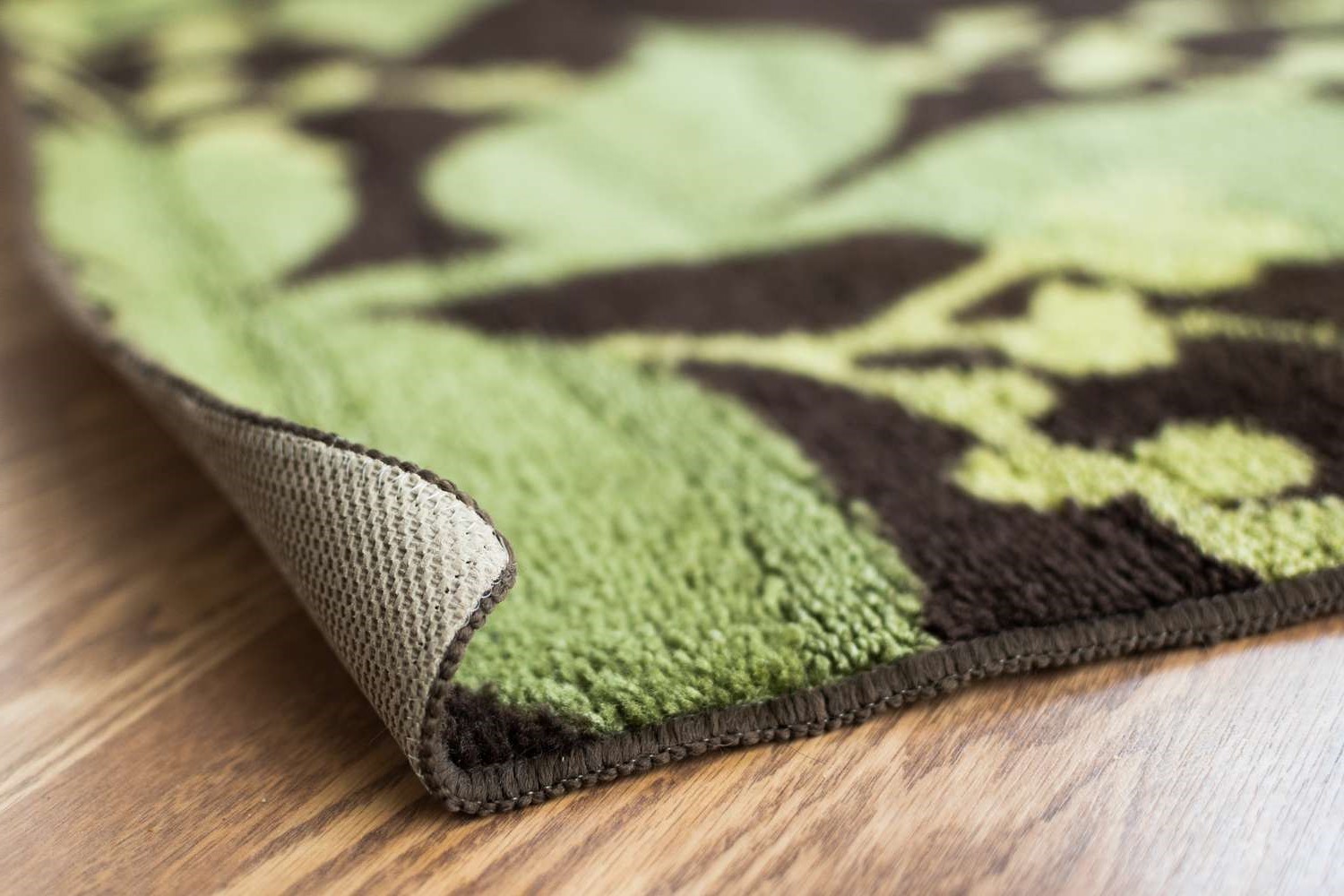Home>Home and Garden>How To Propagate Monstera
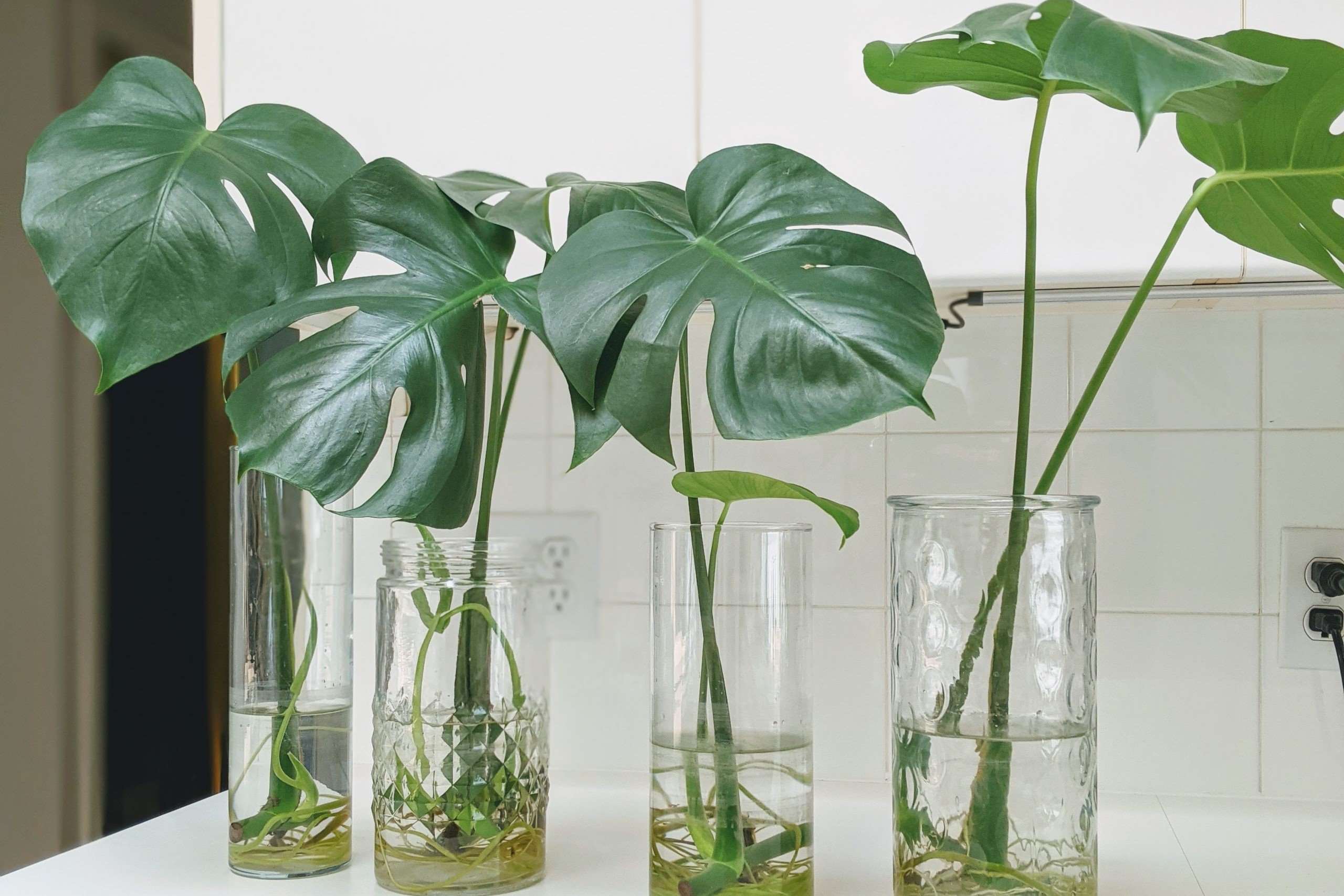

Home and Garden
How To Propagate Monstera
Published: March 3, 2024
Learn how to propagate Monstera plants at home and create a lush garden with our step-by-step guide. Discover the best techniques for successful propagation.
(Many of the links in this article redirect to a specific reviewed product. Your purchase of these products through affiliate links helps to generate commission for Noodls.com, at no extra cost. Learn more)
Table of Contents
Introduction
Monstera, also known as the Swiss cheese plant, is a popular and visually striking plant that has become a staple in many homes and gardens. Its large, glossy leaves and unique fenestrations make it a standout addition to any indoor space. One of the most fascinating aspects of Monstera is its ability to propagate and multiply, allowing plant enthusiasts to expand their collection or share the joy of growing Monstera with others.
Understanding how to propagate Monstera is a valuable skill for any plant lover. Whether you're a seasoned gardener or a beginner with a green thumb, learning the art of propagation opens up a world of possibilities for nurturing and expanding your Monstera family. In this comprehensive guide, we will delve into the various methods of propagating Monstera, providing you with the knowledge and confidence to successfully propagate and care for these stunning plants.
Propagation is not only a means of creating new Monstera plants but also a way to rejuvenate an existing plant, promote growth, and ensure the longevity of this tropical beauty. By exploring the different propagation techniques and understanding the unique needs of Monstera, you can embark on a rewarding journey of nurturing and multiplying these captivating plants.
Whether you're drawn to the lush green foliage, the air-purifying qualities, or the joy of tending to indoor plants, Monstera propagation offers an exciting opportunity to connect with nature and cultivate a thriving indoor jungle. Join us as we explore the art of propagating Monstera, unlocking the secrets to successfully multiplying and caring for these iconic plants.
Read more: How To Propagate Aloe
Understanding Monstera
Monstera, scientifically known as Monstera deliciosa, is a tropical plant native to the rainforests of Central and South America. Its distinctive appearance, characterized by large, glossy leaves adorned with natural leaf holes and splits, has earned it the nickname "Swiss cheese plant." This unique foliage adds an element of exotic beauty to any indoor or outdoor space, making Monstera a sought-after choice for plant enthusiasts.
In its natural habitat, Monstera thrives in the dappled sunlight and high humidity of the rainforest understory. This adaptable plant has also found a welcoming home in indoor environments, where it can flourish with the right care and attention. Understanding the key characteristics of Monstera is essential for successful propagation and overall plant care.
One of the most striking features of Monstera is its fenestrated leaves, which develop as the plant matures. These natural perforations and splits not only contribute to the plant's aesthetic appeal but also serve a functional purpose in its native environment. The fenestrations allow sunlight to filter through the dense rainforest canopy, maximizing the plant's ability to photosynthesize and thrive in its shaded habitat.
Monstera's vining nature further adds to its allure, as it gracefully climbs and trails, creating a captivating display in any setting. As the plant matures, it may produce aerial roots, which can be utilized for support and anchorage. These roots are an integral part of Monstera's growth strategy, enabling it to cling to trees and other surfaces in its natural rainforest habitat.
In terms of care, Monstera is relatively low-maintenance, making it an ideal choice for both experienced and novice plant enthusiasts. Providing the plant with well-draining soil, moderate sunlight, and regular watering can help it thrive and flourish. Additionally, maintaining a humid environment, either through misting or using a humidifier, can mimic the plant's native rainforest conditions and promote healthy growth.
Understanding the unique characteristics and growth habits of Monstera is fundamental to successful propagation and long-term care. By appreciating the plant's natural adaptations and requirements, you can create an environment that nurtures and sustains the beauty of Monstera, whether you're propagating new plants or tending to established specimens.
Propagation Methods
Propagating Monstera plants can be an exciting and rewarding endeavor, offering the opportunity to expand your plant collection and share the beauty of these tropical wonders with others. There are several methods of propagating Monstera, each with its own unique advantages and considerations. Whether you prefer water propagation, soil propagation, or division, understanding the various techniques will empower you to propagate Monstera successfully.
Water Propagation
Water propagation is a popular and visually captivating method for propagating Monstera. This method involves placing a Monstera cutting in a container of water, allowing it to develop roots before transplanting it into soil. To begin, select a healthy stem cutting with at least one node, which is where the roots will emerge. Place the cutting in a clear vessel filled with room-temperature water, ensuring that the node is submerged while the rest of the cutting remains above the waterline. Position the container in a well-lit area, away from direct sunlight, and change the water regularly to maintain cleanliness and oxygen levels. Over time, you will observe the development of roots, signaling that the cutting is ready for transplantation into soil.
Soil Propagation
Soil propagation is another effective method for propagating Monstera, offering a seamless transition from root development to established growth in soil. To propagate Monstera in soil, prepare a small pot with well-draining, nutrient-rich soil. Plant the selected cutting in the soil, ensuring that the node is buried to encourage root development. Place the pot in a warm, well-lit location, and maintain consistent moisture to support the growth of new roots. With proper care and attention, the cutting will establish itself in the soil and begin to grow, eventually developing into a thriving Monstera plant.
Read more: How To Propagate Hydrangeas
Division
Division is a method of propagation that involves separating a mature Monstera plant into smaller sections, each with its own root system. This technique is suitable for established Monstera plants that have developed multiple stems or offshoots. To divide a Monstera plant, carefully remove it from its pot and gently separate the individual sections, ensuring that each division has its own roots and foliage. Plant the divided sections in separate pots, providing them with the appropriate growing conditions to encourage healthy growth and development.
Understanding the various propagation methods for Monstera empowers plant enthusiasts to propagate and care for these captivating plants with confidence and success. Whether you choose water propagation, soil propagation, or division, each method offers a unique approach to nurturing and multiplying the beauty of Monstera, enriching your indoor space with lush greenery and natural elegance.
Water Propagation
Water propagation is a captivating and effective method for propagating Monstera plants, offering a visually engaging process that allows plant enthusiasts to witness the development of roots before transplanting the cutting into soil. This method is particularly popular due to its simplicity and the opportunity it provides to observe the growth of roots in a transparent vessel, adding an element of excitement to the propagation journey.
To initiate water propagation, begin by selecting a healthy stem cutting from a mature Monstera plant. It is essential to choose a cutting with at least one node, as this is where the roots will emerge. The node is a critical point for root development and serves as the starting point for the propagation process. Once the cutting is selected, place it in a clear vessel filled with room-temperature water, ensuring that the node is submerged while the rest of the cutting remains above the waterline. This positioning allows the node to receive the necessary moisture for root initiation while preventing the entire cutting from being submerged, which could lead to rotting.
Position the container in a well-lit area, away from direct sunlight, to provide the cutting with the ideal conditions for root development. It is important to maintain a consistent environment to support the propagation process. Regularly changing the water in the container helps to ensure cleanliness and oxygenation, creating a conducive environment for root growth. As the cutting adapts to its new environment, it will gradually develop roots, which will become visible through the transparent vessel. This visual progression adds an element of anticipation and excitement, allowing plant enthusiasts to witness the growth and development of the new roots.
Once the cutting has developed a healthy root system, it is ready for transplantation into soil. Carefully transfer the cutting into a pot filled with well-draining soil, ensuring that the newly formed roots are gently nestled into the soil. Providing the transplanted cutting with the appropriate growing conditions, including moderate sunlight and consistent moisture, will support its transition from water propagation to established growth in soil.
Water propagation offers a captivating and engaging approach to propagating Monstera plants, allowing plant enthusiasts to actively participate in the growth process and witness the development of roots before transplanting the cutting into soil. This method not only facilitates successful propagation but also adds an element of excitement and visual appeal to the journey of nurturing and multiplying these tropical wonders.
Soil Propagation
Soil propagation is a tried-and-true method for propagating Monstera plants, offering a seamless transition from root development to established growth in soil. This method provides a direct pathway for the cutting to establish itself in a nutrient-rich environment, fostering robust growth and vitality.
To begin the soil propagation process, it is essential to select a healthy stem cutting from a mature Monstera plant. The chosen cutting should possess at least one node, as this is where the roots will emerge. The node serves as the focal point for root initiation, playing a crucial role in the successful propagation of the cutting. Once the cutting is selected, prepare a small pot with well-draining, nutrient-rich soil, creating an optimal environment for root development and growth.
Plant the selected cutting in the soil, ensuring that the node is buried to encourage the emergence of new roots. By providing the cutting with direct contact with the soil, it can readily absorb essential nutrients and moisture, facilitating the establishment of a robust root system. Position the pot in a warm, well-lit location, allowing the cutting to acclimate to its new environment and initiate the growth process.
Consistent moisture is key to supporting the growth of new roots during soil propagation. By maintaining an appropriate level of moisture in the soil, plant enthusiasts can create an environment that encourages the cutting to develop a strong and healthy root system. Regularly monitoring the moisture levels and adjusting the watering frequency as needed will contribute to the successful establishment of the cutting in the soil.
With proper care and attention, the cutting will gradually establish itself in the soil, initiating the growth of new foliage and furthering its development into a thriving Monstera plant. Providing the transplanted cutting with the appropriate growing conditions, including moderate sunlight and consistent moisture, will support its transition from a rooted cutting to a flourishing Monstera plant.
Soil propagation offers a straightforward and effective method for propagating Monstera plants, guiding the cutting through the essential stages of root development and growth in a nutrient-rich environment. This method sets the stage for the cutting to establish itself in the soil, paving the way for the emergence of new foliage and the continued vitality of the propagated Monstera plant.
Division
Division is a versatile and practical method of propagating Monstera plants, particularly suitable for mature specimens that have developed multiple stems or offshoots. This technique involves carefully separating the plant into smaller sections, each with its own root system, to create new individual plants. Division not only facilitates the propagation of Monstera but also promotes the rejuvenation and expansion of existing plants, making it a valuable skill for plant enthusiasts.
To initiate the division process, begin by selecting a mature Monstera plant that has produced multiple stems or offshoots. Carefully remove the plant from its pot, taking care to minimize disturbance to the root system. Once the plant is gently extracted, assess the structure to identify suitable sections for division. Each section should ideally have its own set of roots and foliage, ensuring that it has the potential to thrive independently.
Using a sharp and clean tool, such as a gardening knife or shears, carefully separate the plant into individual sections, ensuring that each division has a sufficient root system to support its growth. It is essential to exercise caution and precision during this process to avoid damaging the roots and foliage of the divided sections. Once the divisions are separated, they can be planted in individual pots filled with well-draining soil, providing them with the necessary growing conditions to encourage healthy development.
After planting the divided sections, it is crucial to maintain consistent moisture and provide them with appropriate light levels to support their transition and establishment. Regular monitoring of the newly divided plants and adjusting the care regimen as needed will contribute to their successful adaptation and growth. With time and attentive care, the divided sections will begin to thrive independently, showcasing new growth and vitality.
Division offers a practical and effective approach to propagating Monstera plants, allowing plant enthusiasts to expand their collection and rejuvenate existing specimens. This method not only creates new individual plants but also presents an opportunity to nurture and care for the divided sections, fostering their growth and contributing to the overall beauty of the indoor or outdoor space.
Read more: How To Propagate Snake Plants
Tips for Successful Propagation
-
Selecting Healthy Cuttings: When embarking on the propagation journey, it is crucial to choose healthy stem cuttings with at least one node. Opt for vigorous and disease-free sections of the plant to ensure the best chances of successful root development and growth.
-
Optimal Environmental Conditions: Providing the right environmental conditions is essential for successful propagation. Maintain a warm and well-lit area for the cuttings, ensuring that they receive indirect sunlight and consistent warmth to support root initiation and growth.
-
Consistent Moisture: Whether opting for water propagation or soil propagation, maintaining consistent moisture is key to nurturing the cuttings. Regularly monitor the moisture levels and adjust the watering regimen as needed to create an environment conducive to root development.
-
Patience and Observation: Successful propagation often requires patience and attentive observation. Monitor the progress of the cuttings, observing the development of roots and new growth. This allows for timely adjustments in care and provides valuable insights into the propagation process.
-
Transplantation Timing: When transitioning cuttings from water propagation to soil or when dividing established plants, timing is crucial. Wait until the cuttings have developed a healthy root system before transplanting them into soil, ensuring a smooth transition and continued growth.
-
Gentle Handling: Handle the cuttings and divided sections with care to minimize stress and damage. Gentle and precise handling during the propagation process helps safeguard the delicate root and foliage structures, promoting successful adaptation and growth.
-
Nutrient Support: Providing the propagated cuttings with nutrient support at the appropriate stage is essential for their continued growth and vitality. Consider using a balanced fertilizer to supplement the soil and promote healthy development.
-
Monitoring and Adjusting: Regular monitoring of the propagated plants and adjusting the care regimen based on their progress is crucial. This proactive approach allows for timely interventions and ensures that the propagated plants receive the necessary support for successful growth.
By incorporating these tips into the propagation process, plant enthusiasts can enhance their chances of successful propagation and create an environment that nurtures the growth and vitality of the propagated Monstera plants.
Conclusion
In conclusion, the art of propagating Monstera plants offers a captivating journey of nurturing, growth, and expansion. Whether through water propagation, soil propagation, or division, each method presents unique opportunities to multiply the beauty of these tropical wonders and create a thriving indoor jungle. Understanding the distinctive characteristics of Monstera, including its lush foliage, vining nature, and adaptability, is fundamental to successful propagation and long-term care.
The process of propagating Monstera not only allows plant enthusiasts to create new individual plants but also provides a means of rejuvenating and expanding existing specimens. By selecting healthy cuttings, providing optimal environmental conditions, and maintaining consistent moisture, plant enthusiasts can set the stage for successful propagation and the continued vitality of the propagated Monstera plants.
The visual appeal and excitement of water propagation, where the growth of roots can be observed in a transparent vessel, add an element of anticipation and engagement to the propagation journey. Similarly, soil propagation offers a seamless transition for the cutting to establish itself in a nutrient-rich environment, fostering robust growth and vitality. Division, on the other hand, presents a practical approach to creating new individual plants from established specimens, contributing to the overall beauty of the indoor or outdoor space.
By incorporating the tips for successful propagation, including selecting healthy cuttings, providing optimal environmental conditions, and practicing gentle handling, plant enthusiasts can enhance their chances of successful propagation and create an environment that nurtures the growth and vitality of the propagated Monstera plants. Patience, observation, and proactive care adjustments are essential elements in the propagation journey, allowing plant enthusiasts to actively participate in the growth process and contribute to the continued beauty of their Monstera collection.
In essence, the art of propagating Monstera is a fulfilling and enriching endeavor, offering a deeper connection to nature and the joy of cultivating a thriving indoor jungle. Whether you're a seasoned gardener or a beginner with a green thumb, the journey of propagating Monstera plants opens up a world of possibilities for nurturing and expanding these captivating tropical wonders. With the knowledge and confidence gained from this comprehensive guide, plant enthusiasts can embark on a rewarding journey of multiplying and caring for Monstera, enriching their living spaces with natural elegance and lush greenery.
